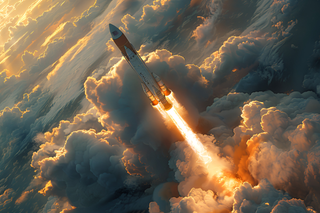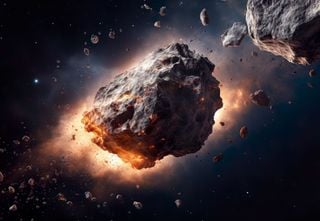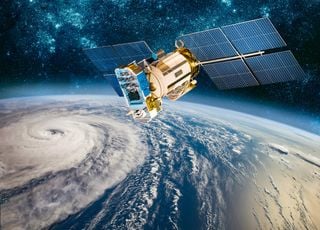Elon, we have a problem! 20 Starlink satellites fly over Earth in the wrong orbit
A failure in the rocket carrying the satellites left them stranded in space. Space X must report how it resolves this incident that is already being investigated by the United States Federal Aviation Administration.

The launch of SpaceX's Falcon 9, scheduled to bring 20 Starlink satellites into space, suffered a technical setback that left the satellites in an incorrect orbit. This could have a negative impact on the connectivity services that the company offers globally.
The satellites were halfway through and are "trapped" in space, only 135 kilometers above the Earth without the possibility of maintaining a stable orbit.
The mission, which took off on July 11 from California, began without problems and everything seemed to indicate that it would be one more launch of the many made by the billionaire Elon Musk company. However, a failure in the upper stage engine, caused by a leak of liquid oxygen, prevented the satellites from reaching the planned altitude of 273 kilometers.
During tonights Falcon 9 launch of Starlink, the second stage engine did not complete its second burn. As a result, the Starlink satellites were deployed into a lower than intended orbit.
SpaceX (@SpaceX) July 12, 2024
SpaceX has made contact with 5 of the satellites so far and is attempting to have them
SpaceX tried to use the ion thrusters of the satellites to raise its orbit, but the atmospheric resistance and the initial low altitude made these efforts unsuccessful. The satellites are intended to re-enter the atmosphere and burn, although there is still no updated information that specifies or provides a schedule on when it could occur.
Impact on connectivity and spatial security
Undoubtedly, this incident puts the quality of the internet service provided by the Starlink network at risk, especially in remote areas that depend exclusively on this type of connectivity. Although SpaceX has more than 6,000 satellites in space, the loss of 20 units represents a setback and a strong setback in its expansion plans since a smaller number of available satellites could decrease the available bandwidth.
In addition to capacity reduction, out-of-control satellites in low orbit pose a risk of collision with other space objects, which could generate more debris and complicate the operations of other satellites.
Faced with this event, SpaceX initiated an internal investigation to identify the exact cause of the failure and is exploring possible improvements in the design of the Falcon 9 to avoid similar problems in the future. At the same time, the company collaborates with the Federal Aviation Administration (FAA) to ensure that future launches comply with the strictest safety standards.

The truth is that the FAA is following very closely what happened with the Falcon 9 and are waiting for a response from Space X to solve the problem of the satellites, which will soon be stellar garbage. They warned from the control body that "no future Falcon rocket will have the green light until that situation is resolved."
The mission of connecting the world and exploring the cosmos
The Starlink project aims to provide Internet connectivity around the world. Despite what happened, it maintains its plans to position about 42,000 satellites in orbit by 2030.

The useful life of a satellite is around 15 years, although it could be drastically reduced depending on the conditions in which it has to orbit and its proximity to the atmosphere. Once their cycle is completed, they lose height and will disintegrate when they re-enter the atmosphere, minimizing the impact of space debris.
Despite this setback, which will serve as a learning experience, SpaceX's track record in successful launches and its ability to innovate remain impressive. Musk's company is recognized for its innovation and its ability to overcome adversities, which is why it is already working on implementing possible design modifications and security redundancies to prevent something similar from happening again.








